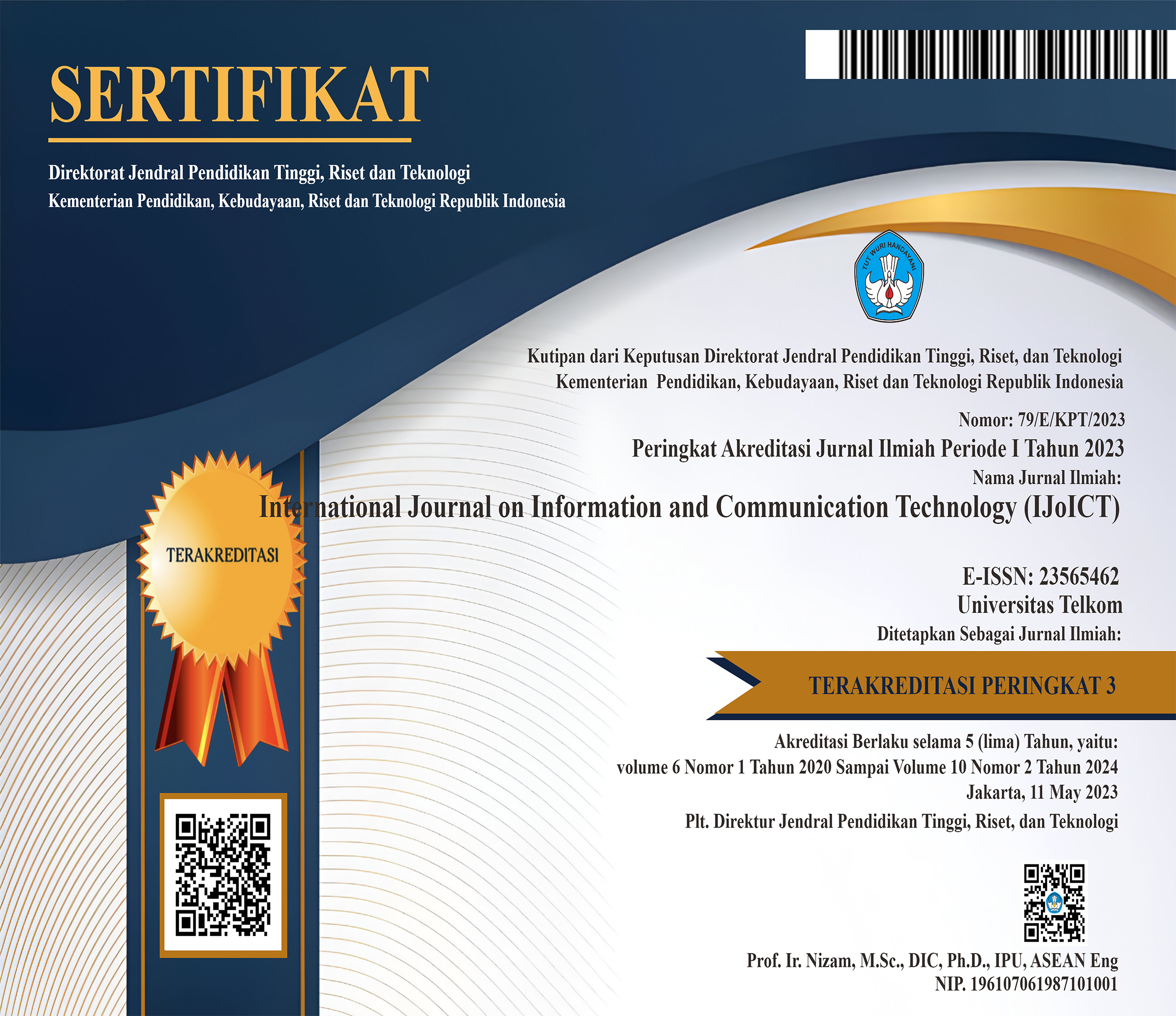Sentiment Analysis on Acute Kidney Syrup Videos Using CNN and LSTM Algorithms
Analisis Sentimen Tentang Isu Obat Sirup Penyebab Ginjal Akut pada Video di Youtube Menggunakan Algoritma CNN dan LSTM
 Abstract views: 236
,
Abstract views: 236
,
 pdf downloads: 55
pdf downloads: 55
Abstract
The issue of acute kidney failure, particularly caused by the consumption of cough syrup, was circulating around October 2022 and has become a serious public health concern. This issue has drawn extensive attention and sparked various reactions on social media. In this digital era, public opinion expressed in comments on social media platforms like YouTube significantly impacts societal perceptions. Therefore, in the context of the aforementioned issue, sentiment analysis on YouTube video comments can provide valuable insights into societal perceptions and people’s reactions. Therefore, this study focuses on the sentiment analysis of public opinions expressed in YouTube comments related to this matter. The methods employed for this analysis include Convolutional Neural Network (CNN) and Long Short-Term Memory (LSTM) with Word2Vec feature extraction. The findings of this study indicate that both these methods produce good performance results with an oversampling dataset with a 90:10 data proportion. In the performance comparison, CNN yielded the highest accuracy, at 0.92, while LSTM was at 0.90.
Downloads
References
[2] A. W. Finaka, "WASPADA Gagal Ginjal Akut Pada Anak," 24 Oktober 2022. [Online]. Available: https://indonesiabaik.id/infografis/waspada-gagal-ginjal-akut-pada-anak.
[3] M. J. Firmansyah and F. , "Menkes Pastikan Penyebab Gagal Ginjal Akut Karena Obat Sirup," 24 Oktober 2022. [Online]. Available: https://nasional.tempo.co/read/1648837/menkes-pastikan-penyebab-gagal-ginjal-akut-karena-obat-sirup.
[4] R. Salsabilla, "Pengumuman! Kemenkes Larang Apotek Jual Obat Sirup," 19 Oktober 2022. [Online]. Available: https://www.cnbcindonesia.com/lifestyle/20221019101043-33-380821/pengumuman-kemenkes-larang-apotek-jual-obat-sirup.
[5] R. Fatmasari, V. M. Ayu, H. B. Pratama and W. Gata, "Analisis Sentimen Dalam Pengkategorian Komentar YoutubeTerhadap Layanan Akademik dan Non-AkademikUniversitas TerbukaUntuk Prediksi Kepuasan," Building of Informatics, Technology and Science (BITS), p. 395?404, 2022.
[6] C. A. A. Soemedhy, N. Trivetisia, N. A. Winanti, D. P. Martiyaningsih, T. W. Utami and S. Sudianto, "Analisis Komparasi Algoritma Machine Learning untuk Sentiment Analysis (Studi Kasus: Komentar YouTube “Kekerasan Seksual”)," Jurnal Informatika: Jurnal pengembangan IT (JPIT), 2022.
[7] D. H. Qudsi and Yuliska, "Analisis Sentimen Pada Data Saran Mahasiswa Terhadap Kinerja Departemen Di Perguruan Tinggi Menggunakan Convolutional Neural Network," Jurnal Teknologi Informasi dan Ilmu Komputer (JTIIK), vol. 8, no. 5, pp. 1067-1076, 2019.
[8] A. A. Kurniawan and M. Mustikasari, "Implementasi Deep Learning Menggunakan Metode CNN dan LSTM untuk Menentukan Berita Palsu dalam Bahasa Indonesia," Jurnal Informatika Universitas Pamulang , vol. 5, pp. 544-552, 2020.
[9] Sartini, "Analisis Sentimen Twitter Bahasa Indonesia Menggunakan Algoritma Convolutional Neural Network," Unnes Repository, Agustus 2020.
[10] S. N. Listyarini and D. A. Anggoro, "Analisis Sentimen Pilkada di Tengah Pandemi Covid-19 Menggunakan Convolution Neural Network (CNN)," Jurnal Pendidikan dan Teknologi Indonesia (JPTI), vol. 1, no. 7, pp. 261-268, Juli 2021.
[11] W. Widayat, "Analisis Sentimen Movie Review menggunakan Word2Vec dan metode LSTM Deep Learning," JURNAL MEDIA INFORMATIKA BUDIDARMA, vol. 5, pp. 1018-1026, 2021.
[12] M. Ihsan, B. S. Negara and S. Agustian, "Metode LSTM (Long short term memory) untuk Klasifikasi Sentimen Vaksin Covid-19 pada Twitter," Jurnal Teknologi Informasi & Komunikasi Digital Zone, vol. 13, pp. 79-89 , 2022.
[13] F. Z. Ahmad, M. F. S. Arifandy, M. R. Caesarardhi and N. A. Rakhmawati, "Bagaimana Masyarakat Menyikapi Pembelajaran Tatap Muka: Analisis Komentar Masyarakat pada Media Sosial Youtube Menggunakan Algoritma Deep Learning Sekuensial dan LDA," Jurnal Linguistik Komputasional, vol. 4, no. 2, 2021.
[14] R. D. Putra, "KLASIFIKASI KOMENTAR TERHADAP POLISI PADA MEDIA SOSIAL YOUTUBE MENGGUNAKAN SUPPORT VECTOR MACHINE," repository, Februari 2021.
[15] T. M. K. J. M. Johnson, "Survey on deep learning with class imbalance," Springer, p. 7, 2019.
[16] I. N. Husada and H. Toba, "Pengaruh Metode Penyeimbangan Kelas Terhadap Tingkat Akurasi Analisis Sentimen pada Tweets Berbahasa Indonesia," Jurnal Teknik Informatika dan Sistem Informasi , vol. 6, pp. 400-413, 2020.
[17] J. Ipmawati, Kusrini and E. T. Luthfi, "Komparasi Teknik Klasifikasi Teks Mining Pada Analisis Sentimen," IJNS - Indonesian Journal on Networking and Security, vol. 6, no. 1, pp. 28-36, 2017.
[18] Yuliska, D. H. Qudsi, J. H. Lubis, K. U. Syaliman and N. F. Najwa, "ANALISIS SENTIMEN PADA DATA SARAN MAHASISWA TERHADAP KINERJA DEPARTEMEN DI PERGURUAN TINGGI MENGGUNAKAN CONVOLUTIONAL NEURAL NETWORK," Jurnal Teknologi Informasi dan Ilmu Komputer (JTIIK), vol. 8, no. 5, pp. 1067-1076, Oktober 2021.
[19] D. I. Af’ida, D. S. F. Handayani and R. W. Pratiwi, "Pengaruh Parameter Word2Vec terhadap Performa Deep Learning pada Klasifikasi Sentimen," Jurnal Informatika: Jurnal pengembangan IT (JPIT), vol. 6, 2021.
[20] P. A. Riyantoko, T. M. Fahruddin, K. Maulida, Hindrayani and E. M. Safitr, "ANALISIS PREDIKSI HARGA SAHAM SEKTOR PERBANKAN MENGGUNAKAN ALGORITMA LONG-SHORT TERMS MEMORY (LSTM)," Seminar Nasional Informatika 2020 (SEMNASIF 2020), pp. 427-435, 2020.
[21] M. Rivki and A. M. Bachtiar, "IMPLEMENTASI ALGORITMA K-NEAREST NEIGHBOR DALAM PENGKLASIFIKASIAN FOLLOWER TWITTER YANG MENGGUNAKAN BAHASA INDONESIA," Jurnal Sistem Informasi (Journal of Information Systems), vol. 1, no. 13, pp. 31-37, 2017.
[22] U. D. Nuswantoro, "Pertemuan Ke 8," 2021. [Online]. Available: https://repository.dinus.ac.id/docs/ajar/pert_ke_7_sistem_cerdas.pdf.

This work is licensed under a Creative Commons Attribution 4.0 International License.
Manuscript submitted to IJoICT has to be an original work of the author(s), contains no element of plagiarism, and has never been published or is not being considered for publication in other journals. Author(s) shall agree to assign all copyright of published article to IJoICT. Requests related to future re-use and re-publication of major or substantial parts of the article must be consulted with the editors of IJoICT.









.png)

.jpg)




